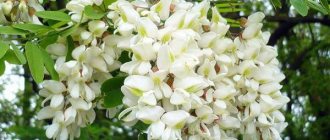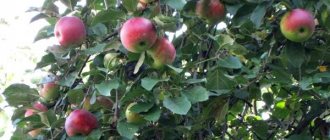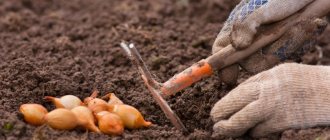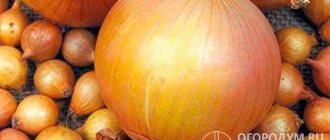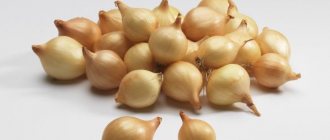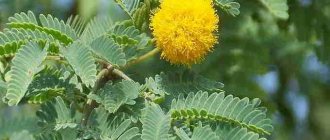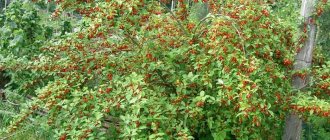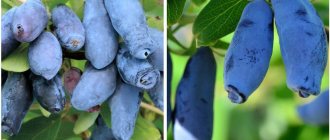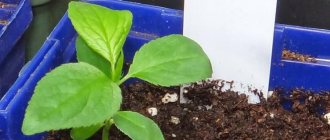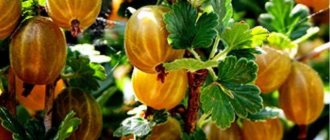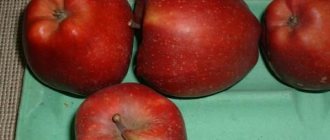An exquisite Australian tree - silver acacia - has long become one of the most common plants on the Black Sea coast of Russia. In our country, acacia is often called mimosa. Its fluffy branches, densely sprinkled with small yellow flowers, are a traditional harbinger of spring. In fact, these are completely different plants, although they belong to the same family - legumes. However, this confusion does not affect the popularity of acacia: the mesmerizing impression of the wildly blooming lush and dense sunny flower cap leaves no one indifferent.
Silver acacia: botanical characteristics
Silver acacia (Acacia dealbata) or whitened acacia belongs to the genus Acacia, legume family. In its homeland, in the southeastern part of the Australian continent and on the island of Tasmania, it is a spreading evergreen tree whose height can reach 45 meters. Found in eucalyptus forests and along river banks. Silver acacia appeared in Europe in 1820, after which it spread to the Mediterranean coast. The culture has been known in Russia since 1852. The plant got its name “silver” from the color of its foliage. Due to the pubescence of the leaves, its shade appears ash-green.
In Russia, silver acacia is often incorrectly called mimosa. Silver acacia is widespread on the Black Sea coast of the Caucasus, and it was its flowering shoots that were a traditional gift in the former USSR on International Women's Day.
Silver acacia is an evergreen tree with a dense umbrella-shaped crown. Its height is on average 10-12 meters (at home in Australia up to 45 m). It has a powerful root system located horizontally. The main root produces a large number of suckers.
The diameter of the trunk can reach 60-70 cm. The bark covering it is smooth and changes color depending on age: the older the tree, the darker the shade becomes. Mature plants have brown or grayish-brown trunks, dissected by a large number of cracks. Drops of thick gum may ooze through them. This substance is used in industry and for medical purposes.
Gum is drops of thick liquid frozen on the trunk or branches of a tree. It has the property of thickening (when it gets into water, it swells and forms a sticky solution). Used in various industries, including medicine.
The leaves are bipinnate in shape, dissected into thin lobes, 10-20 cm long, covered with many small hairs, consisting of 8-24 pairs of long and narrow small leaves of the first order. In turn, each of them has up to 50 pairs of even smaller and narrow leaves of the second order. The purpose of the hairs is to protect the surface of the leaves from moisture loss, sunburn and cold. At the bases of the first order leaves, on the dorsal surface of the main vein, there are round glands. When acacia trees bloom, honey liquid oozes from them.
The flowers of silver acacia are small beaded heads of grayish-yellow color, 4-8 mm in diameter. These small balls are collected into lush racemose inflorescences, which in turn are collected into panicle inflorescences. The petals that make up the flowers are ovoid or broadly lanceolate, with 5 petals in the corolla. The stamens are located on long filaments and protrude far from the corolla. The color of the anthers is bright yellow, and the stamens are close to orange. Flowering of silver acacia, depending on climatic conditions, occurs from mid-winter to mid-spring.
The fruits of silver acacia are oblong, flattened beans with blunt tips, 1.5-8 cm long and about 1 cm wide, light brown or brown with a purple tint. Inside the fruit are hard black or dark brown elliptical seeds 3-4 mm long. Fruiting occurs in August and September.
The growth of the silver stock is rapid. Seedlings in the first year of life reach a height of 50 cm, and already in the second year they grow to 2.5 m. Some of them give their first flowering at this time. The abundant appearance of flowers and fruiting begins in plants whose age is 3-4 years. Mature acacia trees often break due to snow and strong gusts of wind.
Due to its active growth and unpretentiousness to growing conditions, this variety is often used for afforestation of slopes devoid of other vegetation. In addition, silver acacia is one of the valuable technical plants. Its wood is used as fuel and for making handicrafts. Tanning extracts obtained from tree bark are used in leather production.
Distribution history
Few people know the real name of the familiar “mimosa”. This is silver acacia, or whitened acacia. There is another name - Australian acacia, it appeared because it was from Australia that it was once brought to our mainland.
The plant was first discovered in the southeast of Australia, from there seafarers began to transport it to other continents, and now growing silver acacia is possible in many places. So, it is common in Tasmania, Africa, Southern Europe, and the USA. The Black Sea coast of the Caucasus first encountered mimosa in 1852 and has been cultivating it ever since.
As you noticed, the spread of “mimosa” is possible only in regions with a mild climate, where in winter the thermometer does not show below -10 degrees. Silver acacia is a heat-loving plant. It is not frost-resistant, so it cannot be grown in many areas.
Silver acacia and mimosa: differences
The appearance of flowering mimosa branches is well known to everyone. Its golden-yellow, sunny flowers have long been considered symbols of the coming spring. But biologists know that acacia and mimosa are actually completely different plants. A tree with fluffy “chicken” branches, which have long become a symbol of spring for us, is actually called silver acacia and, both in external and botanical characteristics, is very different from mimosa.
The difference is that true mimosas, unlike silver acacia, grow in tropical climates. In our latitudes, mimosa can only be grown as an annual and in greenhouse conditions. The only places where it can be found in Russia are greenhouse collections. In winter, it dies due to a lack of heat and light. You can find it in Russia only in greenhouse collections. And the most famous of more than 300 species of mimosa is considered to be the bashful mimosa (Mimosa pudica) - a low tropical shrub. The plant is interesting in that its leaves are capable of folding in pairs when touched, and then drooping.
Mimosa pudica
Crown formation
All members of the legume family grow very quickly, and silver acacia is no exception. Cultivation and care, especially high-quality ones, give tangible results: during the spring-summer period it gives a significant increase. To avoid thickening and give the crown a beautiful shape, pruning of the plant is necessary. It must be said that acacia tolerates this procedure well. A dense crown is extremely harmful. The sun's rays do not penetrate the overgrown areas of the crown, and flowering there is noticeably reduced. At the same time, the risk of various pathologies increases.
Therefore, after flowering, the plant is inspected, weak branches and branches growing inside the crown are cut out. By forming the required volume, the shoots are shortened, thereby increasing the decorative value of the crop and at the same time sanitizing it.
A decorative and beautifully flowering crop does not cause much trouble compared to the joy that silver acacia fills your home with. Growing it does not involve a lot of time and effort, but it brings great pleasure.
How to grow silver acacia at home
Silver acacia loves light and warmth and is characterized by low frost resistance. It is able to grow only in favorable climatic, tropical or similar conditions. In the middle zone, this magnificent tree is cultivated as a houseplant. With proper care, the acclimatization of silver acacia in the home environment of an apartment or country house goes well, as evidenced by its abundant and long-lasting flowering.
The story of the creation of the world in ancient Egyptian mythology begins with the story of how a primordial hill emerged from the waters of the primordial ocean Nuna. And on this hill grew the sacred Nile acacia-mimosa - “the hand of Atum.” Mimosa is the daughter of Atum the Sun, and therefore its inflorescences consist of small yellow sun balls.
Description
What mimosa looks like - the most popular species in Russia and the republics of the former Union:
| Shy ')); (w||(w=[]))&&w.push({id:b,block:'5201'});})(window,document,"mtzBlocks");
| |
Rough
| |
Lazy
|
Another representative, a rare species of the legume family, the mimosa subfamily, is the water mimosa or Neptunia oleracea. I’ll tell you about it separately.
The main habitat of Neptunia oleracea is Vietnam, Thailand, Indonesia, India.
The genus Neptunia includes 8 species of plants, almost all of them grow on land and only Neptunia oleracea grows in water. More precisely, the root and part of the stem of the plant are under water, the leaves, flowers and fruits are above water.
Description:
- root - located in underwater soil;
- stems - up to 4.5 m long, partially hollow, partially filled with a white spongy substance containing air, which allows the plant to remain buoyant;
- leaves are bipinnate, sensitive to touch;
- flowers are yellow-green, collected in spherical inflorescences;
- blooms - in early summer;
- fruits are leguminous, up to 5 cm long.
Neptunia oleracea is used as food in Asian cuisine and is used in medicine. In the photo - Thai salad with young shoots of Neptunia oleracea - yam phak krachet
The plant is grown at home in large aquariums as a decoration.
But it is often perceived as a malicious and aggressive weed, since neptunia grows very quickly, up to 7 cm per day. Under favorable conditions, the plant begins to cover huge areas of the reservoir. This leads to stagnation of water, the death of some algae and a significant decrease in fish.
Propagation by seeds
It is better to start growing from seeds at home in January. For their active germination, you need to make light, loose soil from equal parts of river sand and leaf soil, adding vermiculite to the mixture. The seeds also need to be prepared: soak for a couple of days in settled water, heated to 60 ºС, adding 1-2 drops of some biostimulant to it. During soaking, you need to make sure that the water with the seeds does not turn sour.
The prepared seeds are placed in a container with a substrate with a depth of 0.5 cm, watered thoroughly and covered with transparent polyethylene or glass. Then the container with the seeds is placed in a warm and well-lit place. The room temperature must be constantly maintained within 22-25 ºС. The germination time of seeds, depending on their quality, is 2-5 weeks.
When 3-4 leaves appear on silver acacia seedlings, they are transplanted individually into pots with a substrate made from a mixture of river sand, humus, turf and leaf soil in a ratio of 1:1:2:4.
Since acacia feels comfortable only in good lighting, it is given a room with windows facing south. At the end of autumn and winter, in conditions of short daylight hours, acacia is provided with additional lighting for 3-4 hours. If everything is done correctly, the seedlings quickly grow into young trees and begin to bloom in the second year after planting.
Growing from cuttings
Cuttings of silver acacia at home are carried out in the spring, when the tree has faded, or at the end of summer. Shoots and branches remaining after pruning are great for this. The length of the cuttings should be about 10 cm. Before planting, they are kept for 6-8 hours in a solution of Zircon or another growth stimulant.
For rooting it is very convenient to use special mini-greenhouses. If they are not available, ordinary separate containers will do, covered with polyethylene or glass jars, thus creating a humid and warm microclimate necessary for cuttings to successfully root and subsequent growth. The soil used is the same as described above.
Containers or mini-greenhouses with seedlings are placed on a sunny, warm windowsill. The room temperature must be constantly maintained in the range of 22-24 ºС. After planting, the cuttings are watered regularly, at intervals of 3-5 days. In winter, watering is reduced to once every 10 days. In spring and summer, complex fertilizing is carried out. If everything is done correctly, the cuttings will take root after 2-3 months.
Acacia flowers contain essential oil, which is used in the perfume industry. Silver acacia bark is also a valuable product; it is widely used in folk medicine.
Economic importance and application
It is common in gardens of the Mediterranean region, where it is grown as an ornamental tree, the flowering shoots of which are exported to northern countries.
The plant produces valuable wood that is used for processing into pulp.
The flowers contain essential oil, which is isolated by extraction with petroleum ether with a yield of 0.1-0.15%. This oil is a yellow ointment-like liquid with a strong aroma. It is used in the manufacture of perfumes. Flowers are collected manually during flowering[4].
Silver acacia bark contains 15-20% tannins, mainly tannins, which are used for technical purposes and can be a source of medicinal tannin[4].
Silver acacia gum contains up to 76% arabine and can be used to obtain gum arabic, used as a coating agent and emulsifier [4].
Growing in culture
Seeds are sown three to five per hole, at a distance of 3-4 m. Caring for the plantation (only in the first three to four years) consists of weeding and loosening. In the first two to three years, silver acacia develops rapidly, giving an average annual growth of 2 m. Three-year-old trees often reach 6-7 m. The height of an adult tree is up to 20 m [4].
Features of care
Caring for silver acacia comes down to fertilizing, replanting, pruning and maintaining the soil in a state of moderate humidity.
During the growing season, the plant is fed once every 3 weeks with a solution of some complex fertilizer. When the acacia is resting, feeding is stopped.
Acacia grows quickly; it has to be transshipped every year. The plant is watered abundantly, carefully pulled out of the old pot along with the earthen lump covering the root system, placed in the center of a larger container and the missing soil is added around the trunk.
During the growing season, acacia is watered up to 2 times a week, during the dormant period - once every 10 days. In hot weather, the frequency of watering is increased and the plant is sprayed if necessary.
Since silver acacia grows very actively, it needs to be pruned from time to time. If this is not done, the crown thickens and the plant may be susceptible to various diseases. Pruning is done after flowering has completed.
In summer, it is advisable to move the tree to the loggia; it needs fresh air. If the plant is cultivated in a country house or in a country house during the warm season, you can bury it in the garden along with the pot in which it grows, choosing a sunny, well-lit area.
When growing southern “guest” in the European part of Russia, for example in the Moscow region, it is necessary to take into account a number of features. First of all, experienced gardeners recommend protecting acacia from significant drops or increases in temperature.
Watering
From early spring to late autumn, it is necessary to keep the soil moist at all times. That is, very abundant watering is required. Water is first collected in a container and left for several days. Hard and cold water is absolutely not suitable. When mimosa blooms, the soil should not be allowed to dry out. As soon as the top two centimeters are slightly dry, it is necessary to moisten the substrate. In winter, you can water much less.
In addition, mimosa really does not like dry air. In this case, spraying the leaves is not suitable because they are too sensitive. An excellent way out is to purchase an air humidifier. Wet expanded clay or pebbles are a great way to save the situation. To do this, take a small tray, lay out the pebbles and place the pot on top. It is enough to add a small amount of water to it, and the plant is provided with an optimal level of humidity.
Diseases of silver acacia
When growing silver acacia, gardeners often face a number of problems:
- Acacia sheds its leaves and buds fall off. This process is caused by drying out of the soil.
- The leaves are withering. The reason is excessive watering or, on the contrary, too dry soil, as well as a very heavy substrate.
- The loss of bright color of the foliage, which becomes pale, occurs with a lack of light.
- The tips of the leaves may dry out. This indicates insufficient soil and air moisture.
- The foliage becomes covered with dark spots. This phenomenon is a consequence of exposure to drafts and cold.
- The appearance of spider mites. This nuisance is often associated with low humidity levels in the room.
In order to avoid these problems, it is necessary to carefully monitor the conditions of the plant. If necessary, watering, light levels, air and soil humidity should be adjusted.
All articles about acacia on the site can be read by following this link...
Silver acacia has found wide application in various areas of life. This beautifully flowering sunny tree is not too demanding to grow, and the positive emotions with which it fills the atmosphere of the house are truly priceless.
Different types - different goals
Different types of mimosa plants are used for a variety of purposes: as ornamentals, protective hedges, soil monitors, for making perfumes, and so on. It can be found all over the globe: in Australia, Africa and Europe, America. The main features are the type of soil: rather poor or even dry soil, as well as rocky areas, because the mimosa tree does not tolerate excessive moisture.
One of the varieties is the silver acacia (Acacia dealbata) - a large and very strong tree with dark green foliage. Abundant yellow flowering appears mainly in late January - March. The main color of mimosa flowers is light yellow, one of the most often used in the field of symbolism. With a delicate aroma, this plant radiates and quite naturally represents the sun. The yellow mimosa is also a flower of reunion. In the language of flowers, it means secret love, security, increased sensitivity.
